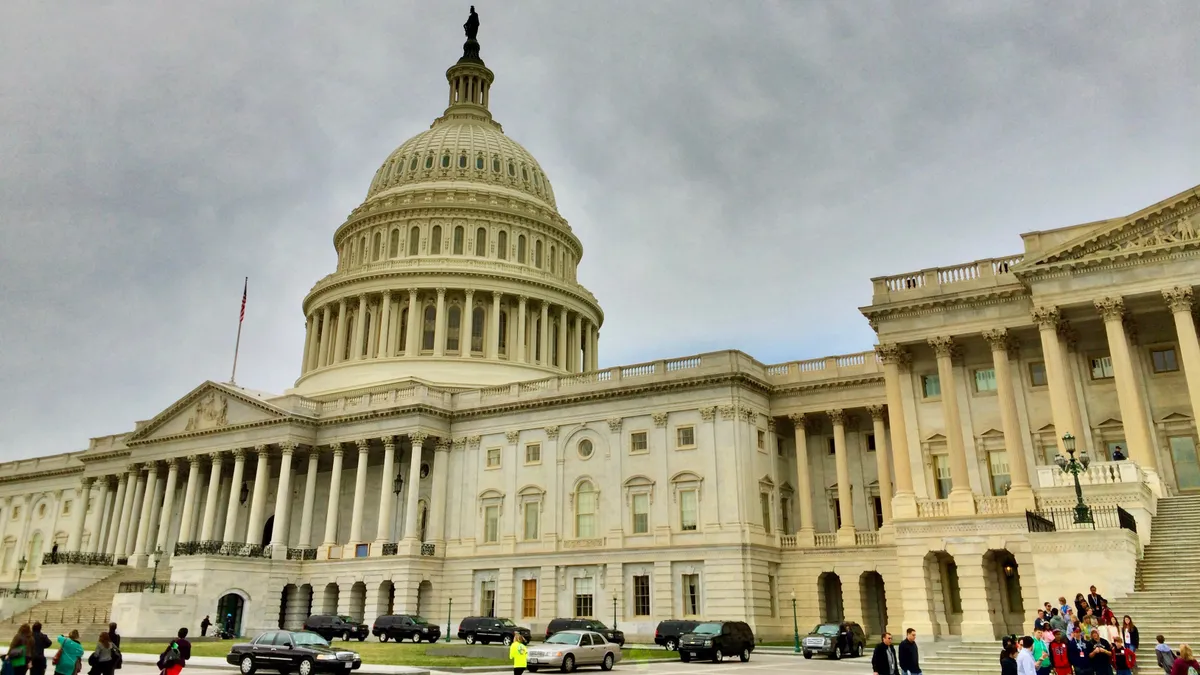Hawaii, Louisiana, Maryland and Maine are the first states to apply for and receive emergency education funds totaling nearly $3 billion they can use for either K-12 or higher education, according to the U.S. Department of Education.
The fund, part of the Coronavirus Aid, Relief, and Economic Security Act, is separate from the $13.2 billion available to state and local education agencies. The Governor’s Emergency Education Relief Fund is essentially a block grant giving governors wide discretion in using the money to support “needs related to COVID-19.” The amounts available to states range from more than $355 million for California to about $4.4 million for Vermont.
It’s unclear, however, whether governors intend to split their allotment evenly between K-12 and higher education or direct the funds to the needs they see as most pressing.
In Oklahoma, which qualifies for almost $40 million, there’s already a difference in opinion on how the funds might be used. Gov. Kevin Stitt, a Republican, has suggested directing some of the money toward the state’s Opportunity Scholarship Fund — the type of tax credit scholarship program U.S. Secretary of Education Betsy DeVos has been promoting for the past year.
But State Superintendent Joy Hofmeister has other plans in mind.
"We do not support that idea,” she said. “Our proposal will focus on meeting the immediate needs of public school students whose education has been most significantly impacted by COVID-19."
Officials in Florida are preparing a plan, according to a spokesperson. Missouri education officials have surveyed district leaders on their greatest needs to determine how they would use the funds. And in Hawaii, which was allotted about $10 million, Democratic Gov. David Ige’s office has indicated the Hawaii State Department of Education would be able to apply for a subgrant once the process has been determined, according to Lindsay Kuʻuipo Chambers, communications director for the department.
Further details from governors’ offices in the four states were not available.
A ‘litany of needs’
Michael Magee, CEO of Chiefs for Change, urged governors to “work with their state education chiefs to ensure funding goes where the research and evidence suggest it will do the most good for students.” He said the organization is preparing some recommendations meant to guide state leaders.
But he added Congress shouldn’t be putting governors in a position to choose between their K-12 and higher education systems. “We will need more stimulus,” he said.
Earlier this month, 12 leading education organizations, representing teachers, parents, school and district leaders, and other specialists submitted a letter to Congressional leaders calling for $200 billion for K-12 education — $175 billion “to help bolster state budgets,” $13 billion for special education and $12 billion for Title I “to help school districts address the litany of needs for these students, playing catch up in the aftermath of COVID.”
On Wednesday, the Council of the Great City Schools also sent its own letter, calling the $13.2 billion a “down payment” and warning “dark clouds are forming on the educational horizon that will spell disaster if Congress does not intervene.” Superintendents of 62 large, urban districts signed the letter.
Meanwhile on Monday, DeVos announced a competitive grant program for distributing another $180 million in discretionary funds for K-12 schools under the CARES Act.
“This is the time for local education leaders to unleash their creativity and ingenuity, and I'm looking forward to seeing what they do to provide education freedom and economic opportunity for America's students,” DeVos said in a statement.
The statement mentions “microgrants to families” for technology, statewide virtual learning programs and new models for providing remote instruction as three categories for the awards.
But reacting to the announcement, American Federation of Teachers President Randi Weingarten said the secretary was using the money to “move full-steam ahead with turning our public schools into online cash cows for her corporate friends and offering families vouchers that divert resources away from the schools that need those resources.”














